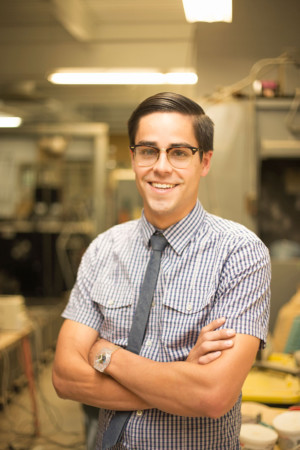Student Spotlight: Ren Gibbons

Ren Gibbons
College of Engineering
Since receiving a middle school invitation to participate in the Science Olympiad, civil engineering major Ren Gibbons has been mesmerized by structures. Through funding as an Undergraduate Research Fellow, Gibbons has participated in several research projects. Gibbons initial project was the development of an optical turbidity sensor for measuring the particle size and distribution of fine particles, particularly clay. The sensor is a helpful tool for answering a common geotechnical engineering question: are certain soils strong enough to support a building, bridge or dam? The sensor consisted of a transparent plastic tube containing an infrared sensor and space for a prepared solution of your soil sample and water. “Over time these particles are going to settle,” Gibbons said. “Then light is shone directly through the particles and the sensors measure the amount of scattered and attenuated light. This and different known equations allow you to figure out what the particle size would be.”
After experiencing some setbacks with the sensor development, Gibbons has transitioned to new research that better suits his long-term interests. Gibbons’ current project utilizes finite element modeling to better understand the stresses and responses of a distressed segmental box girder bridge. Previous tests on the bridge revealed a weak point manifested as a crack. In the process of testing different scenarios the bridge might experiences—varying temperatures, winds, and traffic patterns—researchers found that under some conditions the crack could expand up to 1/32 of an inch. Though this does not pose a structural threat, better understanding this bridge could help prevent similar problems in the future.
Using a finite element analysis program called SAP 2000, Gibbons is creating a model that yields identical results to the data collected by previous researchers. “When we drive a virtual truck across the bridge it will deflect in the same way that we’ve noticed,” he said. “Then we can figure out different scenarios and be reasonably confident in extrapolating certain situations.” Following his graduation this year, Gibbons hopes to continue with this line of research in a graduate program. He spoke praises of his experiences at Utah State.
"I think that if I had gone to a school with a bigger name, I would not have had the opportunity to get involved hands-on with undergraduate research. There are three structural engineering professors on faculty and I know each one of them quite well, which is something that would not have happened had I gone to another school."

